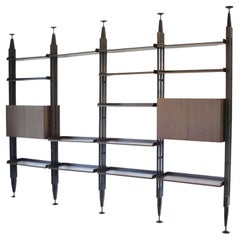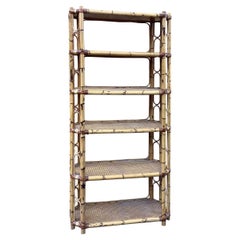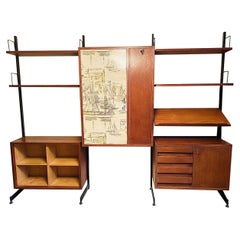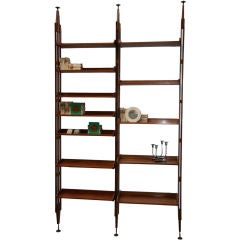Franco Albini Shelving
Vintage 1960s Italian Shelves
Metal
Mid-20th Century Italian Mid-Century Modern Bookcases
Bamboo
Recent Sales
Vintage 1950s Italian Mid-Century Modern Cupboards
Metal, Brass
Vintage 1950s Italian Shelves
Brass
Vintage 1950s Italian Mid-Century Modern Shelves and Wall Cabinets
Acrylic
Vintage 1960s Italian Shelves and Wall Cabinets
Metal
Vintage 1950s Italian Bookcases
People Also Browsed
Vintage 1950s French Organic Modern Side Tables
Rope
Early 20th Century English Edwardian Sheffield and Silverplate
Copper
Early 20th Century English Edwardian Sheffield and Silverplate
Silver Plate
Mid-20th Century English Dinner Plates
Porcelain
21st Century and Contemporary Spanish Mid-Century Modern Chandeliers and...
Metal
Antique 19th Century English Chinese Chippendale Shelves
Bamboo, Lacquer
Mid-20th Century Italian Mid-Century Modern Sofas
Brass
Mid-20th Century Unknown Mid-Century Modern Sterling Silver
Sterling Silver
21st Century and Contemporary Bergere Chairs
Linen
2010s Austrian Jugendstil Chandeliers and Pendants
Silk
Antique 19th Century French Tables
Iron
Vintage 1950s Italian Mid-Century Modern Armchairs
Metal
Mid-20th Century French Mid-Century Modern Coffee and Cocktail Tables
Brass
20th Century Rustic Console Tables
Wood
21st Century and Contemporary Austrian Mid-Century Modern Table Lamps
Brass
Antique Late 19th Century French Napoleon III Magazine Racks and Stands
Wood
Read More
The Ultimate Guide to Types of Tables for the Home
Whether you’re just moving in or ready to give your home a makeover, our guide will give you pointers on tables that are fitting for every room, nook and hallway.
What Exactly Is a Secretary Desk, and What Is It Used For?
The furniture equivalent of a Swiss Army knife, it's the multifunctional piece you didn't know you needed.
This Shelving System with Oxidized Brass Tubes Is Retro and Futuristic at Once
Italian studio DimoreMilano mustered great ingenuity when crafting these sculptural shelves, which are built without any screws.
28 Cheerful Home Bars, Where Everybody (Literally) Knows Your Name
Simple or sophisticated, equipped with console, cart or custom cabinetry, these stylish bar areas deserve a toast.
Ask an Interior Designer: Work-from-Home Edition
Leaping into a design project, whether it's refreshing the bedroom or redoing the whole house, can be overwhelming. Luckily, we know more than a few interior designers. You asked questions on Instagram, and now they're answering.
Collected and Eclectic, ‘Wunderkammern’ Are Back in a Big Way
Introduced nearly 500 years ago, curiosity cabinets are finding new fans among today's collectors and designers.
Meet the Incredible Woman Transforming Fallen Trees into Sleek Furniture
In the hands of New York Heartwoods cofounder Megan Offner, unwanted local trees become works of design art.
These New York Architects Love a Complicated Project
From Brooklyn townhouses to Maine campgrounds, Trattie Davies and Jonathan Toews relish a challenge, like transforming a former warehouse space into the new 1stdibs Gallery.



